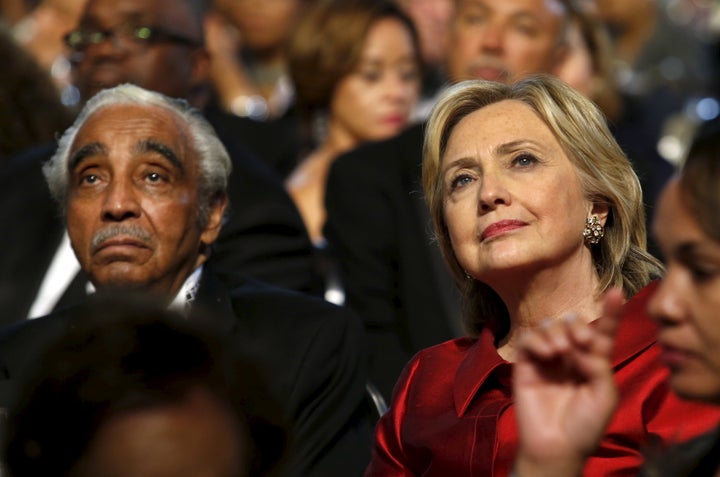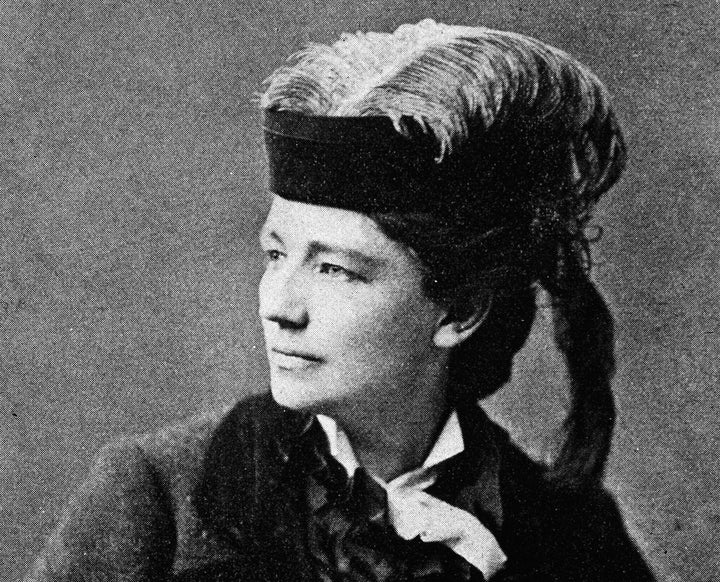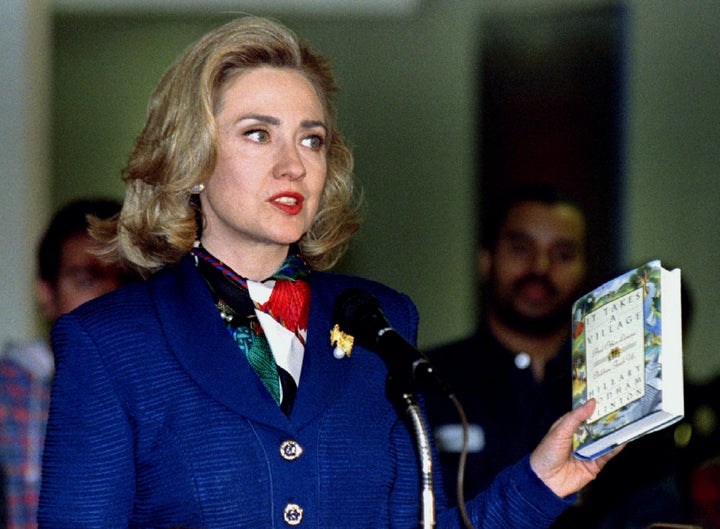
As Democrats celebrate Hillary Clinton’s success as the presumptive Democratic presidential nominee, many, including Clinton herself, are paying tribute to the women who helped pave the way for this historic moment.
After she secured enough delegates to clinch her party's nomination, Clinton gave a victory speech acknowledging the hard work of those who came before her.
"Tonight's victory is not about one person. It belongs to generations of women and men who struggled and sacrificed and made this moment possible," she said. Her campaign also produced a video that gives a nod to other pioneering women, including the late Shirley Chisholm, the first black woman elected to Congress and the first black woman to run for a major party's presidential nomination.
Though Clinton and Chisholm have their fair share of differences on policy issues, people who knew Chisholm and studied her legacy suggest that the two shared common ground where it mattered the most.
“In 1972, Congresswoman Chisholm showed that a woman -- and not just any woman, but a woman of color -- could be a serious contender for the presidency. There’s no doubt in my mind that [she] would be inspired by Secretary Clinton’s continuation of that legacy,” said Rep. Barbara Lee (D-Calif.), one of Chisholm’s mentees.
Back to the time of Victoria Woodhull, the first woman to run for president in 1872, female candidates have faced an extraordinary amount of sexism. When Woodhull and other suffrage activists testified before the House Judiciary Committee, for example, a news article felt it necessary to note their age and marital status, saying their group comprised "old maids and maidens, candidates for matrimony and those who had lost all hope of sinking their names in those of the sterner sex."

Nearly 150 years later, some of that treatment continues. Clinton’s critics have scrutinized her appearance constantly during her 30-plus years in public service. During her first presidential bid in 2008, conservative pundit Michelle Malkin joked that the then-60 year-old "looks 92," and columnist Pat Buchanan referred to her as a "nagging wife." This time around, Clinton continues to be told that she's not smiling enough or that her voice is too loud.
In her book The Highest Glass Ceiling: Women’s Quest for the American Presidency, historian Ellen Fitzpatrick details the challenges Chisholm faced because of her race and gender. Her appearance served as fodder for disparaging comments throughout the campaign season -- particularly from then-President Richard Nixon's administration.
At the height of the Democratic primary, a Nixon operative crafted fake press releases alleging that Chisholm was a "transvestite in men’s clothing" who remained under "psychiatric care." Nixon and his advisers also reportedly laughed at a photo of Chisholm and feminists Bella Abzug, Betty Friedan and Gloria Steinem meeting, saying it looked like a "burlesque."
“Chisholm ran as a "progressive voice for the poor, the vulnerable, children, single moms, immigrants and everyone who has been locked out of the process.””
- Rep. Barbara Lee (D-Calif.)
Democrats weren't always all that much better. White politicians in the Democratic Party refused to take Chisholm's presidential campaign seriously, while black male politicians chose not to support her campaign out of concern that she would be the “candidate of the women” instead of the “candidate of the blacks.” A member of the Congressional Black Caucus even opted to publicly promote Cleveland Mayor Carl Stokes as a presidential candidate, even though he continuously rejected a presidential bid and Chisholm’s campaign was already underway.
Though Chisholm had been an advocate for the right to abortion long before the Supreme Court's Roe v. Wade decision, feminists also hesitated to support her bid for the White House. In a TV appearance with Chisholm, Steinem told the public that she would be supporting both Chisholm and her primary rival, Sen. George McGovern (D-S.D.), since he was “the best white male candidate.” Clinton also lent her support to McGovern in the primary. It wasn’t until Chisholm rejected her “semi-endorsement” that Steinem endorsed her fully.

But this disparaging treatment of Chisholm by the Democratic elite does not mean that she was "anti-establishment," according to Fitzpatrick.
"She wanted in," Fitzpatrick told The Huffington Post in an interview. "She was a Democratic Party loyalist who was trying to change the party to make it resemble the voters who were actually putting these people in office and expecting things from them. She wanted to bring women and African-Americans into the center of the party."
But even with the dual strides she made as an African-American female politician, Lee believes Chisholm’s contributions to public service shouldn’t be confined to her identity as a woman, or a black woman. In Lee’s view, she ran as a “progressive voice for the poor, the vulnerable, children, single moms, immigrants and everyone who has been locked out of the process.”
Chisholm's pursuit of public service began by working with children as a teacher -- much like Clinton, who began working with the Children’s Defense Fund in 1973 after law school.

The origins of Clinton’s public service career were rooted in more progressive politics, but by the 1990s, Clinton’s rhetoric had shifted to the center, in tandem with the policies of her husband's administration. Though she worked as an advocate for poor, marginalized and disabled children in the 1970s, Clinton adopted the racially coded "super predator" rhetoric that fueled the 1994 crime bill, claiming that young offenders were “kids with no conscience and no empathy” that needed to be "brought to heel." Clinton now says that she regrets that language and has moved to right those wrongs in her racial justice platform.
Although both women were strong advocates for education, their legacies diverged when it came down to the type of education solutions they supported.
“I think Ms. Chisholm would be most upset at the Democratic Party’s embrace of neoliberal solutions, like charter schools, privatized education and attacks on public schools and public school teachers,” said Barbara Winslow, founder and director of The Chisholm Project at the City University of New York’s Brooklyn campus.
When asked if Clinton would be included in that critique, Winslow responded, “Oh yes.”
In fact, one of Chisholm’s greatest achievements in the New York State Assembly was co-authoring and implementing legislation that established free city college tuition and other resources for students from underserved high schools -- a plan that Winslow believes is more aligned with that of Clinton's primary challenger, Sen. Bernie Sanders (I-Vt.).
Winslow also maintains that Clinton’s foreign policy stance further differentiates her from Chisholm.
“She would be very disappointed in the hawkishness of the Democratic Party,” Winslow said.
While Clinton voted for the Iraq War (and continues to defend it), Chisholm’s first speech as a U.S. congresswoman in 1969 was in opposition to the Vietnam War -- a position that did not win her many friends in Washington. Chisholm continued to oppose military spending bills, choosing instead to pressure her colleagues to vote in favor of more expansive welfare (but much of that progress was lost when both Clintons worked to pass the 1996 Welfare Reform Act).
“[Chisholm] would be delighted to see a woman emerge as the standard bearer of the Democratic Party. But she would also feel that it was imperative that the candidate embody the goals and issues that were central to her.”
- Ellen Fitzpatrick, historian and author
But even though the political differences between the two are stark, some believe that if she were here today, Chisholm would not hesitate to throw her support behind Clinton.
Barbara Bullard, the producer of an upcoming biopic about Chisholm, firmly believes so. Though she would “embrace Bernie Sanders' economic initiatives,” Bullard believes Chisholm would “look at the bigger picture.”
"I think Hillary is picking up a lot of similarities with Ms. Chisholm as well, like for instance, Ms. Chisholm fought for minimum wage for domestic workers, and now Hillary fighting for them as well. It's a part of her platform," Bullard said. “Ms. Chisholm fought for healthcare, and Hillary has been doing it since the 90s. Ms. Chisholm fought for the Equal Rights Amendment, and Hillary's also fighting for that.”
“She would look at it strategically and say, ‘Hey, Hillary is going to move us forward,’” Bullard added.
Joyce Cusack, a former Florida state representative, believes Chisholm’s lifelong commitment to getting more women elected to public office would be enough for her to support Clinton. Chisholm was Cusack's mentor and hosted a fundraiser for her during her first run for the state legislature. That was, after all, the the goal of the National Women’s Political Caucus, a grassroots organization Chisholm helped co-found in 1971 that focuses on recruiting and supporting women for elected office.
“I firmly believe she’d get behind Secretary Clinton,” Cusack said. “I don’t think she would miss out on the opportunity to help open new doors in our country.”
Fitzpatrick agrees, but she also says Chisholm’s dedication to gender parity in public office would not lead her to forsake her radical politics.
“She was very radical in her beliefs. ... So while she would be delighted to see a woman emerge as the standard bearer of the Democratic Party," Fitzpatrick said, "she would also feel that it was imperative that the candidate embody the goals and issues that were central to her.”

